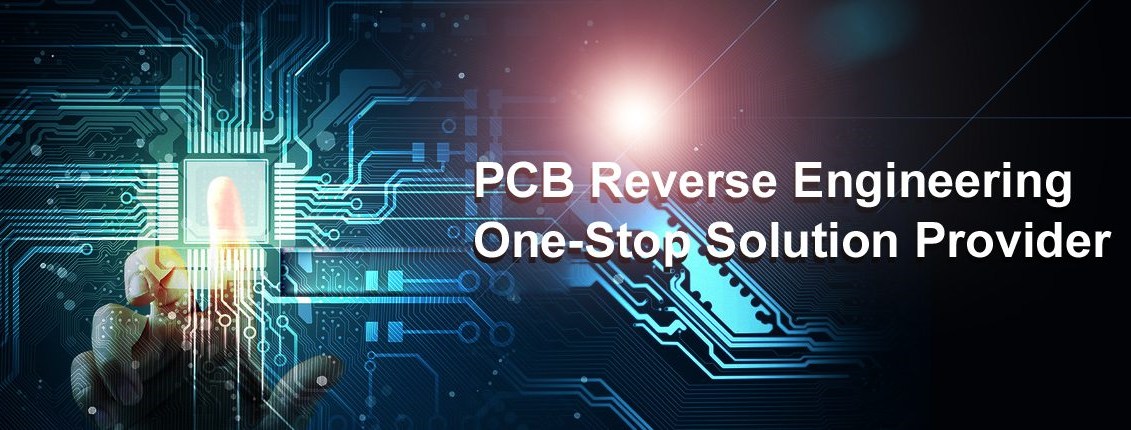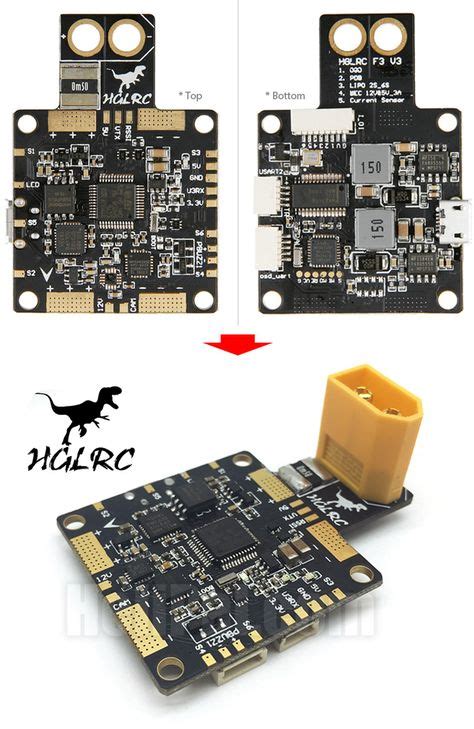Understanding Drone Boards
What is a Drone Board?
A drone board, also known as a flight controller, is the central processing unit (CPU) of a drone. It is responsible for managing all the critical functions of the aircraft, including:
– Stabilization and navigation
– Motor control
– Sensor integration
– Communication with the remote control and other devices
The drone board receives input from various sensors, such as accelerometers, gyroscopes, and GPS modules, and uses this information to make real-time adjustments to the drone’s flight characteristics. It also interprets commands from the remote control and translates them into actions, such as changing the speed and direction of the motors.
Types of Drone Boards
There are several types of drone boards available on the market, each designed for specific applications and skill levels. The most common types include:
- All-in-one boards
- Integrated flight controller, ESCs, and power distribution
- Ideal for beginners and small drones
-
Examples: Naze32, CC3D, KK2.1.5
-
Modular boards
- Separate flight controller, ESCs, and power distribution components
- More customizable and upgradeable
- Suitable for advanced users and larger drones
-
Examples: Pixhawk, APM, DJI A3
-
Proprietary boards
- Designed and manufactured by specific drone companies
- Optimized for their own drones and ecosystems
- May offer unique features and performance
- Examples: DJI Naza, Yuneec ST10+, Parrot Bebop
Key Factors to Consider When Choosing a Drone Board
1. Compatibility
Ensure that the drone board you choose is compatible with your specific drone frame, motors, ESCs, and other components. Consider the following aspects:
– Size and mounting options
– Supported motor types and configurations
– Required voltage and current ratings
– Connectivity options (e.g., UART, I2C, SPI)
2. Sensor Integration
The quality and quantity of sensors integrated with the drone board can significantly impact its performance and capabilities. Look for boards that support:
– High-quality IMU (Inertial Measurement Unit) for accurate stabilization
– Barometer for altitude hold and landing assistance
– GPS for autonomous navigation and failsafe features
– Magnetometer for heading lock and compass-based navigation
3. Processor and Memory
A powerful processor and sufficient memory are essential for smooth and reliable operation, especially when running complex algorithms and handling multiple tasks simultaneously. Consider boards with:
– High-speed, multi-core processors (e.g., ARM Cortex-M series)
– Ample flash memory for storing firmware, settings, and log data
– Sufficient RAM for real-time data processing and task management
4. Firmware and Software Support
The firmware and software ecosystem surrounding the drone board can greatly influence its usability, functionality, and community support. Look for boards that offer:
– Well-documented and actively maintained firmware (e.g., Betaflight, PX4, ArduPilot)
– Intuitive and feature-rich configuration software (e.g., Mission Planner, QGroundControl)
– Active user communities and forums for troubleshooting and knowledge sharing
5. Expandability and Customization
As your skills and requirements grow, you may want to add new features or customize your drone’s capabilities. Choose a board that supports:
– Expansion ports for connecting additional sensors, peripherals, or companion computers
– Programmable I/O pins for custom functions and integrations
– Open-source firmware and software for easy modification and development
6. Price and Availability
Consider your budget and the availability of the drone board when making your choice. Keep in mind that:
– Higher-end boards may offer better performance and features but come at a premium price
– Proprietary boards may be more expensive and have limited availability compared to open-source alternatives
– Popular boards may have better community support and more readily available spare parts
Comparison of Popular Drone Boards
| Board Name | Type | Processor | Sensors | Firmware | Price Range |
|---|---|---|---|---|---|
| Naze32 | AIO | STM32F103 | IMU, Baro | Betaflight, Cleanflight | $20 – $40 |
| Pixhawk 4 | Modular | STM32F765 | IMU, Baro, GPS, Mag | PX4, ArduPilot | $150 – $200 |
| DJI Naza-M V2 | Proprietary | Not specified | IMU, Baro, GPS | DJI Firmware | $300 – $400 |
| Matek F405-STD | AIO | STM32F405 | IMU, Baro | Betaflight, iNAV | $30 – $50 |
| SP Racing F7 Dual | Modular | STM32F745 | IMU, Baro | Betaflight, iNAV | $60 – $80 |

Setting Up and Configuring Your Drone Board
Once you have chosen the right drone board for your needs, it’s essential to properly set it up and configure it for optimal performance. The following steps outline the general process:
-
Install the firmware: Flash the appropriate firmware (e.g., Betaflight, PX4) onto the board using the manufacturer’s instructions and tools.
-
Connect the board to your computer: Use a USB cable to connect the drone board to your computer for configuration and tuning.
-
Configure the board settings: Use the associated configuration software (e.g., Betaflight Configurator, Mission Planner) to set up the board’s parameters, such as:
- Flight modes and switch assignments
- PID tuning for stabilization
- Failsafe and battery monitoring settings
-
Sensor calibration
-
Perform initial tests: Before installing the board on your drone, conduct initial tests to ensure proper functioning, such as:
- Motor spin-up and direction tests
- Sensor checks (e.g., accelerometer, gyroscope)
-
RC input and failsafe tests
-
Install the board on your drone: Carefully mount the drone board on your frame, ensuring proper orientation and secure connections to the motors, ESCs, and other components.
-
Conduct final tests and tuning: With the board installed, perform final tests and tuning, such as:
- Full range motor tests
- Flight controller stabilization tuning
- GPS and compass calibration (if applicable)
- Autonomous mode testing (if applicable)
Troubleshooting Common Issues
Even with the best drone board and proper setup, you may encounter issues during operation. Here are some common problems and their potential solutions:
- Erratic flight behavior
- Check for loose connections or damaged wires
- Recalibrate sensors and re-tune PID settings
-
Ensure the propellers are balanced and in good condition
-
Loss of RC signal
- Check the battery levels of the transmitter and receiver
- Ensure the antennas are properly positioned and connected
-
Verify the failsafe settings are correctly configured
-
Poor GPS performance
- Ensure the GPS module has a clear view of the sky
- Check for interference from nearby electronic devices
-
Recalibrate the GPS and compass sensors
-
Overheating
- Ensure adequate ventilation around the board and components
- Check for excessive current draw or short circuits
-
Consider adding heatsinks or active cooling solutions
-
Firmware issues
- Verify you are using the latest stable firmware version
- Check for compatibility with your specific board and components
- Consult the firmware documentation and user forums for known issues and solutions
Frequently Asked Questions (FAQ)
-
Q: Can I use a drone board from one manufacturer with components from another?
A: In most cases, yes, as long as the board and components are compatible in terms of size, connections, and communication protocols. However, it’s always best to consult the manufacturer’s documentation and user forums for specific compatibility information. -
Q: How often should I update the firmware on my drone board?
A: It’s generally recommended to update the firmware whenever a new stable version is released, as it may include important bug fixes, performance improvements, and new features. However, always read the release notes and user feedback before updating to ensure compatibility and stability with your specific setup. -
Q: What is the difference between an all-in-one and a modular drone board?
A: All-in-one boards integrate the flight controller, ESCs, and power distribution into a single unit, making them more compact and easier to install. Modular boards, on the other hand, have separate components, allowing for greater customization and upgradeability, but may require more complex wiring and setup. -
Q: Can I use a drone board designed for racing drones in a photography drone?
A: While it’s possible, racing drone boards are typically optimized for high-speed, agile flight and may not have the same level of stability and reliability required for smooth, stable footage. It’s generally better to choose a board specifically designed for photography and videography applications. -
Q: How do I choose the right size drone board for my drone?
A: The size of the drone board should be proportional to the size of your drone frame and components. Larger drones generally require larger, more powerful boards to handle the increased current draw and processing requirements. Always consult the manufacturer’s recommendations and specifications when selecting a board for your specific drone build.
Conclusion
Choosing the best drone board is a critical step in building or upgrading your drone, as it directly impacts the aircraft’s performance, reliability, and safety. By understanding the key factors to consider, such as compatibility, sensor integration, processor and memory, firmware and software support, expandability, and price, you can make an informed decision that meets your specific needs and requirements.
Remember to properly set up and configure your drone board, and be prepared to troubleshoot common issues that may arise during operation. With the right drone board and a well-tuned setup, you can enjoy the full potential of your drone, whether you’re capturing stunning aerial footage, competing in high-speed races, or conducting professional surveys and inspections.
